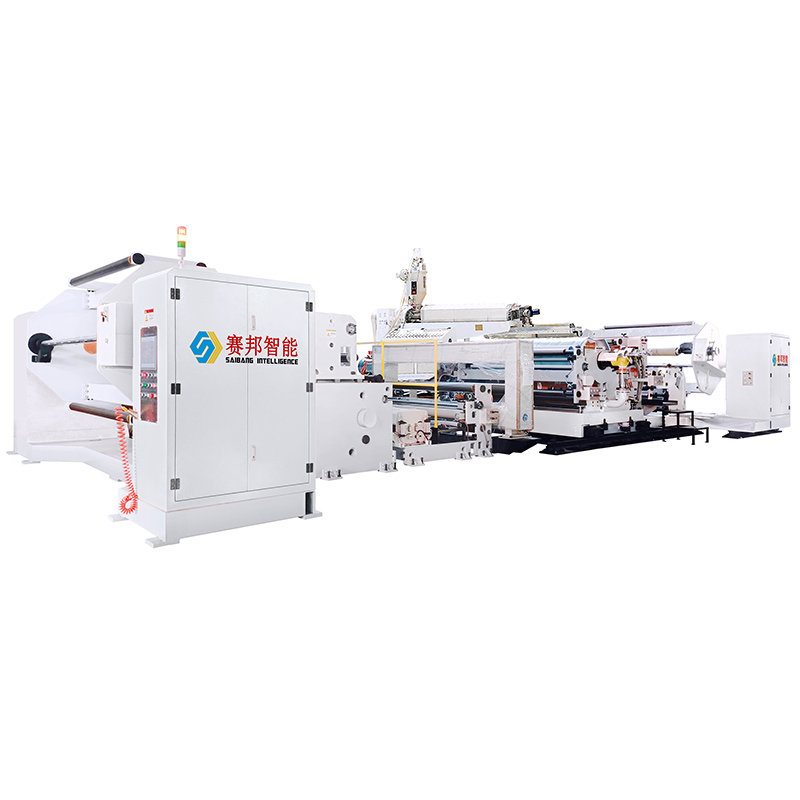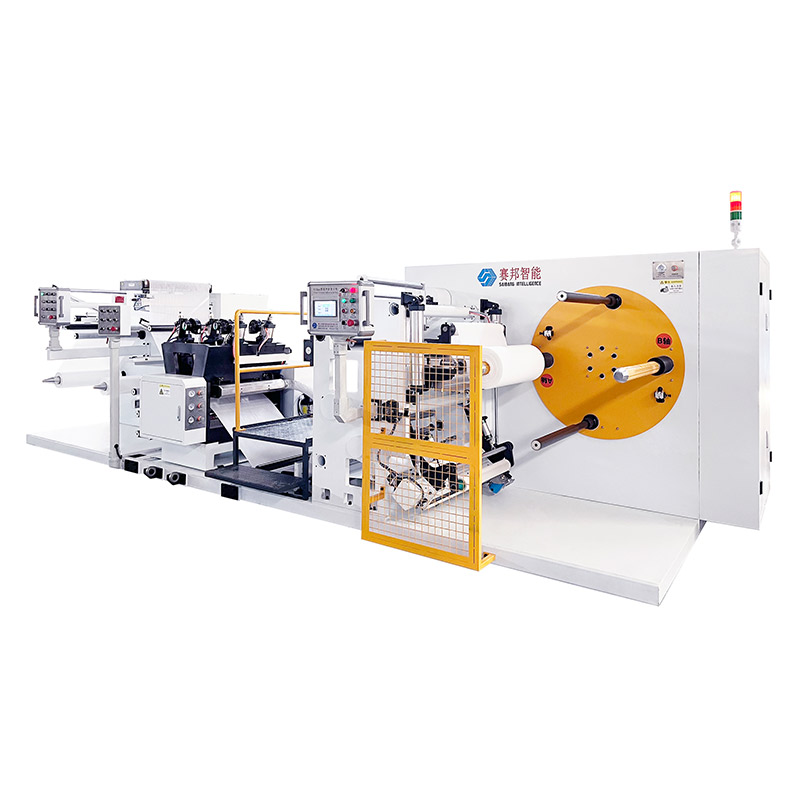How To Use Coating Machine?
A coating machine is a vital piece of equipment used in industries such as flexible packaging, film manufacturing, and composite material processing. It precisely applies a layer of adhesive, resin, or other coating materials onto various substrates like plastic film, paper, foil, or fabric.
Knowing how to use a coating machine correctly not only ensures high-quality products but also improves production efficiency, reduces waste, and extends equipment life.
This guide provides a complete, step-by-step explanation of machine preparation, setup, operation, maintenance, and safety practices, helping both beginners and professionals master the coating process.
Preparation Before Operation
Before starting a coating machine, thorough preparation is essential for stable performance and safety. Proper pre-operation steps ensure uniform coating thickness, consistent bonding quality, and long-term reliability.
Checking Power and Air Supply
Make sure the machine is connected to a stable power source and properly grounded. The air compressor should supply clean, dry air with a pressure range of 0.5–0.8 MPa, ensuring all pneumatic components function correctly.
Inspect emergency stop buttons, circuit breakers, and power indicators to confirm safety systems are active. Any loose wiring or abnormal voltage must be corrected before starting the machine.
Verifying Raw Materials
Choose the appropriate substrate material — whether PET, BOPP, CPP, aluminum foil, paper, or nonwoven fabric — according to your production requirements.
Check that coating materials such as adhesives, varnishes, or resins are fully mixed, filtered, and maintained at the correct viscosity. A viscometer should be used to ensure proper fluid consistency, typically within a range specified by the adhesive manufacturer.
Always confirm the coating material is compatible with the substrate to prevent poor adhesion or surface defects.
Setting Environmental Conditions
Maintain a stable working environment to guarantee coating uniformity.
The workshop temperature should stay between 20–28°C, and relative humidity below 65% to prevent moisture contamination or solvent condensation.
If using solvent-based coatings, install proper ventilation and exhaust systems to ensure a safe and odor-free environment.
Machine Setup
The correct setup of the coating machine determines the overall quality of production. Every mechanical and electronic component must be adjusted with precision before running the line.
Installing and Aligning the Material Roll
Mount the raw material roll onto the unwinding shaft and secure it with an air expansion chuck or mechanical clamp.
Ensure the web is threaded correctly through guide rollers, tension rollers, and the coating unit.
Alignment should be perfect — even a slight misalignment can cause wrinkles or uneven coating. Use the automatic web guide system if available to keep the substrate centered during operation.
Adjusting Coating Head and Parameters
The coating head is the heart of the machine. Select the correct coating method based on material and application — such as knife-over-roll, gravure roll, or slot-die coating.
Set the coating gap or roller pressure according to the required coating thickness.
Ensure the coating head, rollers, and blades are thoroughly cleaned to remove hardened adhesive or dust particles.
For precise coating, calibrate the coating head using micrometers or digital gauges to maintain consistent layer thickness across the width of the material.
Configuring Drying and Heating Systems
The drying oven plays a crucial role in solvent evaporation and adhesive curing.
Set temperature zones according to the coating material properties — generally 60°C to 120°C for water-based coatings and 80°C to 150°C for solvent-based adhesives.
Gradually heat the oven to avoid sudden thermal expansion that might deform the substrate.
Ensure balanced airflow inside the oven for uniform drying. Inspect the air circulation fans, filters, and temperature sensors regularly to prevent uneven heating or contamination.
Setting Tension and Rewinding Systems
Accurate tension control prevents stretching, wrinkling, or misalignment during coating.
Adjust the unwinding and rewinding tension to maintain a constant web force, typically within ±2% deviation.
If your coating line has automatic tension control (ATC), set parameters according to substrate thickness and production speed.
During high-speed coating, stable tension ensures consistent adhesion and film smoothness throughout the process.
Starting the Coating Process
After setup, it’s time to begin production. The coating process must be carefully controlled at every stage to achieve a defect-free surface and reliable lamination results.
Initial Test Run
Start the machine at low speed to check material alignment, coating coverage, and tension stability.
Visually inspect the coating pattern under proper lighting — ensure there are no streaks, pinholes, or uneven patches.
If defects appear, pause immediately to adjust roller pressure, viscosity, or coating gap.
Normal Operation
Once the coating is uniform, gradually increase the running speed to the standard production rate.
Monitor the coating weight and layer thickness using an inline measurement system or offline gauge.
Inspect the coated film surface for gloss consistency, adhesion, and color uniformity.
Maintain continuous observation of temperature, drying efficiency, and lamination pressure throughout the process.
Drying and Lamination Stage
As the coated substrate moves through the drying oven, the solvent evaporates, leaving a uniform adhesive layer.
If lamination is required, feed the secondary material (film, foil, or paper) into the lamination section. Apply the correct nip pressure and temperature to ensure bonding strength.
After lamination, allow the material to pass through a cooling roller system before rewinding to prevent distortion and blocking.
Rewinding and Quality Inspection
Once the coating and lamination are complete, rewind the finished roll under constant tension.
Inspect the roll edge alignment and confirm that no telescoping or air bubbles are present.
Check bonding strength, peel adhesion, and surface quality according to quality control standards.
Label and record each batch for traceability before transferring the rolls to the storage area.
Maintenance and Cleaning
Routine maintenance and proper cleaning ensure the coating machine remains efficient, reliable, and safe for long-term operation.
Daily Cleaning Procedures
At the end of each shift, stop the machine and clean the coating head, rollers, and drying units thoroughly.
Use appropriate cleaning solvents recommended by the adhesive supplier to remove residues without damaging the metal surfaces.
Wipe dry with lint-free cloths to prevent contamination in the next production run.
Never leave adhesive or resin inside the coating system overnight, as it can harden and block nozzles or rollers.
Weekly and Monthly Maintenance
Lubricate all bearings, gearboxes, and drive components with high-quality lubricants suitable for your environment.
Inspect tension sensors, encoders, and servo motors to ensure smooth movement and accuracy.
Test safety interlocks, limit switches, and temperature sensors to verify that they respond correctly.
For high-speed coating lines, check air shafts, chucks, and brakes for wear and replace parts as necessary.
Long-Term Storage
If the machine will be idle for an extended period, disconnect the power, release pneumatic pressure, and clean all coating parts.
Apply anti-rust oil to rollers and metallic surfaces, cover the entire coating section with protective film, and store it in a clean, dry area.
Periodically rotate rollers by hand to prevent sticking or deformation.
Safety Guidelines
Operating a coating machine involves high temperatures, solvents, and moving parts, so safety must always come first.
Always wear safety gloves, goggles, and anti-static clothing.
Never reach into the machine while rollers or web drives are moving.
Keep flammable materials away from heaters or drying ovens.
Follow lockout/tagout procedures before performing maintenance or cleaning.
Maintain clear access to fire extinguishers, ventilation ducts, and emergency exits.
Regularly train operators on emergency shutdown and fire prevention measures.
Following these safety rules minimizes risk and ensures a safe, productive working environment.
Professional Tips for Better Coating Results
Control viscosity accurately: A stable viscosity provides even coating and consistent adhesion.
Use digital control systems: Automatic coating thickness and tension control improve repeatability.
Monitor temperature zones: Uneven heat may cause blistering, bubbling, or delamination.
Perform test runs before full production: Adjust parameters to match new substrates or adhesives.
Record production data: Document temperature, speed, tension, and coating rate for quality tracking.
Maintain a clean environment: Dust or oil particles can cause defects on high-precision films.
Industrial Applications
Coating machines serve a wide range of industries that rely on thin-film and composite technologies:
Flexible Packaging: Producing PET/PE and BOPP/CPP laminates for food and beverage packaging.
Electronics and Optical Films: Manufacturing release liners, protective films, and reflective coatings.
Medical and Hygiene Materials: Coating nonwoven fabrics for masks, bandages, and sanitary products.
Paper and Printing Industry: Creating glossy, waterproof, or heat-sealable surfaces.
Construction and Furniture: Laminating decorative panels, wall coverings, and insulation materials.
Each application demands customized parameters — coating thickness, drying temperature, and bonding strength — depending on the material and final product requirements.
Conclusion
Mastering how to use a coating machine requires attention to detail, from setup and coating adjustment to inspection and cleaning. Proper training and process control help operators achieve stable coating quality, high efficiency, and long equipment life.
A well-maintained coating line delivers superior adhesion, smooth surfaces, and energy efficiency — essential advantages for today’s competitive industrial manufacturing.
By following best practices, maintaining safety awareness, and applying precise process control, you can ensure that your coating machine performs at its highest potential for every production run.
Previous: How To Operate A Slitter Machine?
Next: What Is Coating Machine?




